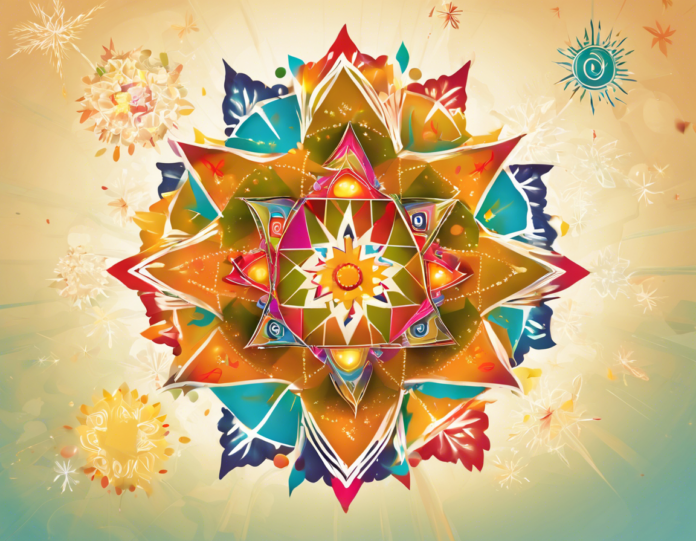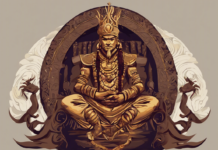Makar Sankranti, also known as the Kite Festival, is one of the most significant festivals celebrated in various parts of India and Nepal. It marks the transition of the sun into the zodiac sign of Capricorn and is a time of new beginnings and the harvest season. During this auspicious time, people exchange heartfelt wishes and greetings with their loved ones to spread joy and happiness. If you’re looking for some heartwarming Makar Sankranti wishes to share with your family and friends, here are some thoughtful messages to convey your love and blessings:
1. Wishing you a harvest of happiness and prosperity on this Makar Sankranti. May you soar high like a kite in the sky!
2. As the sun enters Capricorn, may it bring you new opportunities, success, and abundance. Happy Makar Sankranti!
3. Let the vibrance and color of this festival brighten up your life. Wishing you and your family a joyous Makar Sankranti!
4. May the sweetness of til (sesame) and jaggery fill your lives with happiness and success. Happy Makar Sankranti!
5. On this auspicious day, may the warmth of the sun fill your life with joy, peace, and prosperity. Happy Makar Sankranti to you and your loved ones!
6. Like the kites in the sky, may your dreams soar high and your spirit remain unbroken. Wishing you a blessed Makar Sankranti!
7. May this Makar Sankranti bring you closer to your family and friends, and fill your heart with love and laughter. Happy Makar Sankranti!
8. Let this festival of kites fill your life with colors of happiness and prosperity. Wishing you a joyful Makar Sankranti!
9. As the sun starts its journey northward, may it bring new energy and positivity into your life. Happy Makar Sankranti!
10. On this auspicious day, may you be blessed with good health, wealth, and success. Wishing you a very happy Makar Sankranti!
Frequently Asked Questions (FAQs) about Makar Sankranti:
1. What is the significance of Makar Sankranti?
Makar Sankranti marks the transition of the sun into the zodiac sign of Capricorn, symbolizing new beginnings and the harvest season. It is a time to celebrate the end of winter and the arrival of longer days.
2. How is Makar Sankranti celebrated in different parts of India?
Makar Sankranti is celebrated differently in various regions of India. In some states like Gujarat and Maharashtra, it is celebrated with kite flying and special delicacies like tilgul (sesame and jaggery sweets). In South India, it is celebrated as Pongal, with the preparation of a special dish made from newly harvested rice.
3. Why is kite flying significant during Makar Sankranti?
Kite flying during Makar Sankranti symbolizes reaching out to the gods and sending messages to them. It is believed that flying kites brings good luck and prosperity. The colorful kites in the sky also represent the freedom of the spirit.
4. What are some traditional foods eaten during Makar Sankranti?
Traditional foods enjoyed during Makar Sankranti include tilgul (sesame and jaggery sweets), khichdi (a mixture of rice and lentils), gajak (a sweet made from sesame seeds and jaggery), and various regional delicacies like puran poli, sakkarai pongal, and more.
5. How do people greet each other on Makar Sankranti?
People greet each other on Makar Sankranti by saying “Happy Makar Sankranti” or “Uttarayan ni dhara pr, sankranti no parv.” They exchange sweets, gifts, and heartfelt wishes for happiness, prosperity, and good health in the new year.
6. What are some common rituals associated with Makar Sankranti?
Common rituals observed during Makar Sankranti include taking a holy dip in rivers like the Ganges, offering prayers to the sun god, flying kites, exchanging sweets and gifts, donating to the poor and needy, and performing pujas and havans for blessings and prosperity.
7. Is Makar Sankranti a national holiday in India?
Makar Sankranti is not a national holiday in India, but it is celebrated with great enthusiasm in various states across the country. Schools, offices, and many businesses remain open, but people often take time off to participate in the festivities with their families.
8. How can I celebrate Makar Sankranti if I’m away from home?
If you’re away from home during Makar Sankranti, you can still celebrate the festival by flying kites, preparing traditional foods, sharing festive greetings with friends and colleagues, and participating in local Makar Sankranti events or gatherings to experience the joy and spirit of the festival.
9. Are there any specific colors or symbols associated with Makar Sankranti?
Yellow and orange are considered auspicious colors for Makar Sankranti, symbolizing warmth, energy, and prosperity. The sun, kites, sesame seeds, jaggery, and cows are also significant symbols associated with the festival.
10. What are some eco-friendly ways to celebrate Makar Sankranti?
To celebrate Makar Sankranti in an eco-friendly way, you can use biodegradable kites, natural dyes for coloring kites, avoid using plastic strings (manja) to fly kites to prevent harm to birds and animals, and clean up any kite debris after the festivities to protect the environment.
Makar Sankranti is a time to rejoice, reconnect with loved ones, and spread happiness and positivity. Whether you’re celebrating with family or friends, these heartwarming wishes and messages will surely convey your love and blessings on this auspicious occasion.









